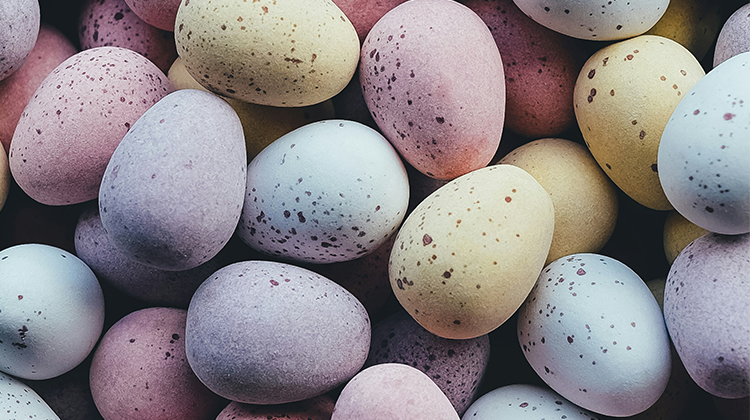First and foremost, what is Easter and when do exactly Easter dates fall?
As you probably already know, Easter is a Catholic holiday, accompanied by masses, processions, and religious rituals still very much felt throughout Italy.
It is a so-called movable feast: because its date varies from year to year since it correlates with the lunar cycle.
As you know, Italy is an intensely Roman Catholic country and the week leading up to Easter is known as ‘Settimana Santa’ (‘Holy Week’), which includes:
- Domenica delle Palme (Palm Sunday)
- Lunedì e Martedì Santo (Holy Monday and Tuesday)
- Mercoledì Santo (Spy Wednesday)
- Giovedì Santo (Maundy Thursday)
- Venerdì Santo (Good Friday)
- Sabato Santo (Holy Saturday)
- Domenica di Pasqua (Easter Day)
But there is also ‘La Pasquetta’ - namely Easter Monday or ‘Little Easter’ - which we will see later in this article.
After Christmas, Easter is chronologically the first and most important festivity in Italy.
Of course, it is an occasion to celebrate with family and friends and to discover the many traditions that vary from region to region.
When we hear the word Pasqua (Easter), our thoughts immediately run to chocolate eggs, doves, baskets with bunnies and chicks, and flowers in pastel shades.
We wait to celebrate it after the cold winter because it falls on the Sunday following the first full moon of the spring season.
So, you may also find people celebrating outdoors – if it is sunny of course - having traditional Easter picnics.
This day means friends, family, and food with big meals and of course lots, lots of chocolate.
Let me tell you a fun fact about Pasqua:
When someone does a lot of cleaning, they call it ‘pulizie di Pasqua’ (spring-cleaning), we say for example: ‘Questi giorni sto facendo le pulizie di Pasqua’ (These days I’ve been doing Easter cleaning) to mean that we are cleaning and putting the house in order. This saying comes from a past tradition to welcome the new season by cleaning the house before Easter, and today is still used, and not only during Easter.
⬇️ I'm curious to know if this expression also exists in your native language, so please let me know in the comment section down below!
Ok, let’s explore the first Easter tradition I have picked for you!
1) Savoury and sweet breakfast
I love waking up on Easter day because the table at breakfast is just amazing. When I was a child, it was one of the most awaited moments of the whole year. But let me tell you why:
Of course, depending on the region in Italy, you may find different and typical treats, but something that really cannot miss is hard-boiled eggs.
Eggs are a symbol of life and rebirth and they give color to the whole table since usually children and adults like to dye and decorate them with brilliant colors. I really love the final look on the table and the fact that coloring the eggs is an activity that brings children and adults together during this period.
As the title suggests, one typical thing related to the Easter breakfast is that it’s both savory and sweet.
As you know, Italians are famous for sweet breakfasts, which usually include a cappuccino or caffè with cornetto – and I’m one of those sweet-addicted people – but at Easter, I feel like I can give it a try and ‘change’ only for a day my habit to explore also savory tastes at breakfast, which include pizza di Pasqua al formaggio – namely the Easter cheesecake - which as the name suggests is made of cheese (parmigiano and/or pecorino) - omg this is soooo good – accompanied by the already mentioned hard-boiled eggs, and some ciauscolo, which is a traditional cured meat from Umbria and Marche.
Since I’m in Rome – so centre of Italy - this is what my Easter breakfast most of the time looks like.
But one thing that is in every house at Easter, is the famous Colomba, which as you can see from the picture is a traditional Easter bread, the counterpart of the two well-known Italian Christmas sweet treats: Panettone and Pandoro. Since ‘colomba’ means ‘dove’ in Italian, its dough is fashioned into a dove-shaped bread and topped with pearl sugar and almonds before being baked. But of course, you can also find other versions topped with chocolate instead. This sweet treat is typical of the Lombardia region and it’s now worldwide renowned. Another northern tradition is the pinza pasquale from Trieste in the Friuli-Venezia Giulia region, a sweet bread with a three-point cross carved on top.
2) Easter Lunch:
After the amazing breakfast, which looks like lunch already, we prepare ourselves to gather with the family and friends for lunch!
In Campania, especially in Naples, you will find the amazing casatiello, whose basic ingredients are flour, lard, cheese, salami, eggs, and black pepper; and the sweet pastiera napoletana, which is a Neapolitan Easter cake made of short pastry, with wheat cream, ricotta, and candied fruit.
For many Italians, Easter without lamb on their table is hard to imagine. The tradition of eating lamb at Pasqua is strongly rooted in history. The lamb (‘agnello’ in Italian) is an important symbol in many religions, but especially in Christianity. The image of the lamb appears in some of the most treasured Renaissance masterpieces—Da Vinci’s “Sant'Anna, la Vergine e il Bambino con l'agnellino” for example.
Again, from lamb, you can also find another typical dish called coratella which is usually the lamb’s heart, lungs, and liver. It is oven-cooked with white wine, lemon juice, extra virgin olive oil, broth, salt and pepper, often served with artichokes. In Lazio, instead, we especially eat abbacchio alla romana, which is a baby lamb cooked in white wine, garlic, and rosemary. ‘Abbacchio’ is the Roman slang word for ‘agnello’ - lamb – in Italian.
⬇️Disclaimer: I’m not a chef, and this is my personal experience with some of the most typical Easter meals in Italy. Of course, there exist many others according to each region and tradition, so if you want to provide your precious contribution on the topic, feel free to leave a comment below for the sake of knowledge-sharing!
3) Chocolate Easter eggs:
After lunch, it is time for sweets! Besides the typical Colomba, another must-have sweet treat is uova di Pasqua al cioccolato (chocolate Easter eggs)
⬇️ In this regard, if you also do celebrate Easter, let me know what you are used to eat during this day!
Today, chocolate Easter eggs rule the Easter world. Even in the smallest villages, every grocery store, shop window, and market stall will boast an abundant display of these treats in the days leading up to Easter Sunday.
Inside, the chocolate eggs may be hollow, contain creamy fillings, or even feature a tiny surprise, like small trinkets and even engagement rings – for the most romantic!
4) Pasquetta:
'Natale con i tuoi, Pasqua con chi vuoi', namely ‘Christmas with your folks and Easter with whoever you want’. This saying is especially true after the ritual Sunday lunch. Angel Monday – Pasquetta in Italian – which is a national holiday as well, is dedicated to trips out of town, picnics, or barbecues for having the so-called grigliata (bbq), to enjoy nature and spring. It’s a very old tradition, dating back to the Middle Ages when people used to visit churches and shrines to receive the angel's blessing.
Also, this day is a great excuse to enjoy some time with family and friends, hopefully blessed by some sun!
Indeed, you must know that it’s pretty common that during this day it rains, and when it doesn’t people run out of their houses to go under the sun like lizards!
So, good, that’s all for today!
These were my 4 Italian Easter traditions that I wanted to share with you!
Maybe you knew them all, or maybe you didn’t, despite this, I hope you enjoyed this article and learned something about how Italians are used to celebrating this special day.
Of course, if you have any questions, please let me know in the comment section down below! Thank you for reading this article.
If you want to learn more about me, feel free to check out my profile!
Ciao!







